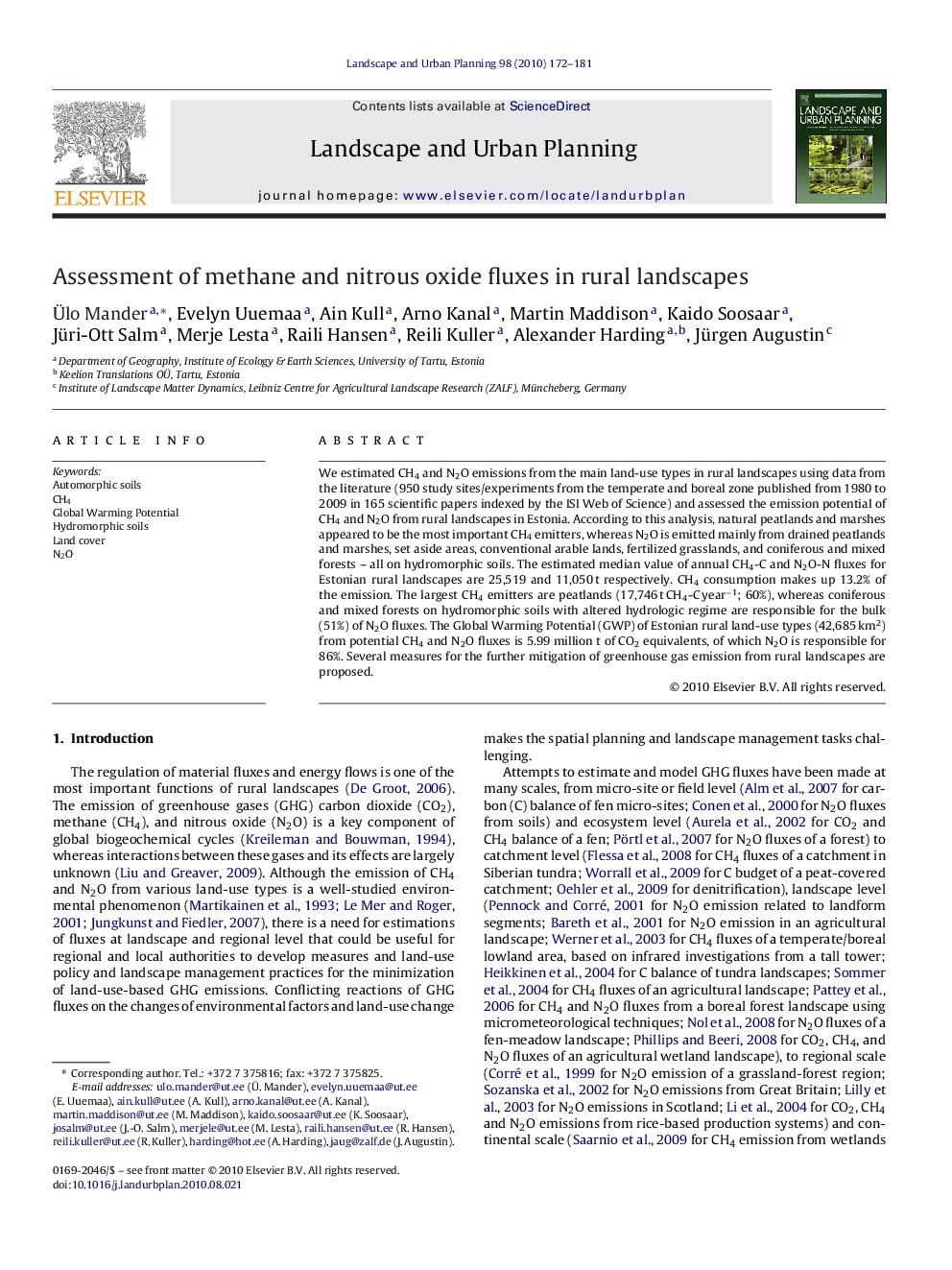| کد مقاله | کد نشریه | سال انتشار | مقاله انگلیسی | نسخه تمام متن |
|---|---|---|---|---|
| 1049799 | 1484656 | 2010 | 10 صفحه PDF | دانلود رایگان |

We estimated CH4 and N2O emissions from the main land-use types in rural landscapes using data from the literature (950 study sites/experiments from the temperate and boreal zone published from 1980 to 2009 in 165 scientific papers indexed by the ISI Web of Science) and assessed the emission potential of CH4 and N2O from rural landscapes in Estonia. According to this analysis, natural peatlands and marshes appeared to be the most important CH4 emitters, whereas N2O is emitted mainly from drained peatlands and marshes, set aside areas, conventional arable lands, fertilized grasslands, and coniferous and mixed forests – all on hydromorphic soils. The estimated median value of annual CH4-C and N2O-N fluxes for Estonian rural landscapes are 25,519 and 11,050 t respectively. CH4 consumption makes up 13.2% of the emission. The largest CH4 emitters are peatlands (17,746 t CH4-C year−1; 60%), whereas coniferous and mixed forests on hydromorphic soils with altered hydrologic regime are responsible for the bulk (51%) of N2O fluxes. The Global Warming Potential (GWP) of Estonian rural land-use types (42,685 km2) from potential CH4 and N2O fluxes is 5.99 million t of CO2 equivalents, of which N2O is responsible for 86%. Several measures for the further mitigation of greenhouse gas emission from rural landscapes are proposed.
Research highlights▶ Based on literature data from 950 study sites/experiments of the temperate and boreal zone, a country-wide assessment of the CH4 and N2O emissions from rural landscapes has been undertaken. ▶ The estimated Global Warming Potential of all land-use types in Estonia from potential CH4 and N2O fluxes is about 6 million t of CO2 equivalents, whereas N2O is responsible for 86%. ▶ Avoidance of drainage on peatland soils, development of organic agriculture, and the planting of short-rotation energy forests and energy crops can reduce greenhouse gas emissions.
Journal: Landscape and Urban Planning - Volume 98, Issues 3–4, 30 December 2010, Pages 172–181